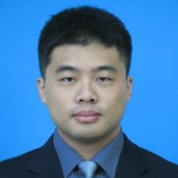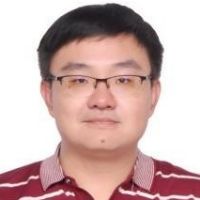Advanced Optoelectronic Crystals and Devices: Designing and Characterization
A special issue of Crystals (ISSN 2073-4352). This special issue belongs to the section "Materials for Energy Applications".
Deadline for manuscript submissions: 10 July 2024 | Viewed by 3206
Special Issue Editors
Interests: tunable laser; DFB laser; grating coupled laser
Special Issues, Collections and Topics in MDPI journals
Interests: tunable lasers; photonic inverse design method; optical neural networks; SUSY and non-hermitian in laser system
Interests: high power; narrow linewidth; semiconductor laser
Special Issue Information
Dear Colleagues,
Optoelectronic devices are essential and form many fundamental components in modern optic systems. Their broadly covered applications include data center interconnection, fiber optical telecommunication, coherent detection and ranging, etc. Boosted by advancing nano-fabrication technology, ever-increasing computational power and revolutionary data-driven algorithms, this research field is now in a very favorable position as it steps into the next phase of its evolution.
In this Special Issue, we invite the community to submit breakthrough results or comprehensive reviews of progressively advancing optoelectronic devices’ design and characterization with respect to the fields including, but not limited to: novel materials, simulation and design methods, crystalline material characteristics and test solutions and novel device structures and applications.
Dr. Yongyi Chen
Dr. Cheng Qiu
Dr. Peng Jia
Dr. Yue Song
Guest Editors
Manuscript Submission Information
Manuscripts should be submitted online at www.mdpi.com by registering and logging in to this website. Once you are registered, click here to go to the submission form. Manuscripts can be submitted until the deadline. All submissions that pass pre-check are peer-reviewed. Accepted papers will be published continuously in the journal (as soon as accepted) and will be listed together on the special issue website. Research articles, review articles as well as short communications are invited. For planned papers, a title and short abstract (about 100 words) can be sent to the Editorial Office for announcement on this website.
Submitted manuscripts should not have been published previously, nor be under consideration for publication elsewhere (except conference proceedings papers). All manuscripts are thoroughly refereed through a single-blind peer-review process. A guide for authors and other relevant information for submission of manuscripts is available on the Instructions for Authors page. Crystals is an international peer-reviewed open access monthly journal published by MDPI.
Please visit the Instructions for Authors page before submitting a manuscript. The Article Processing Charge (APC) for publication in this open access journal is 2600 CHF (Swiss Francs). Submitted papers should be well formatted and use good English. Authors may use MDPI's English editing service prior to publication or during author revisions.
Keywords
- nano-fabrication technology
- crystalline material characteristic
- data-driven photonic inverse design method
- novel OE materials
- perovskite photoelectric devices
- quantum dot photoelectric devices
- graphene photoelectric devices
- organic photoelectric devices








